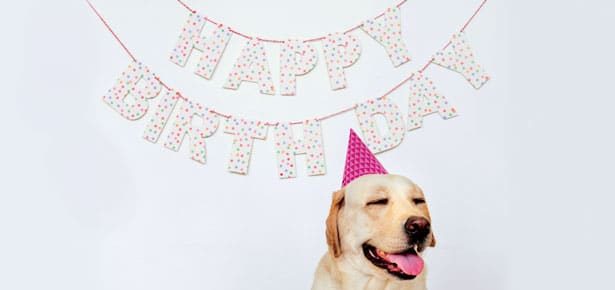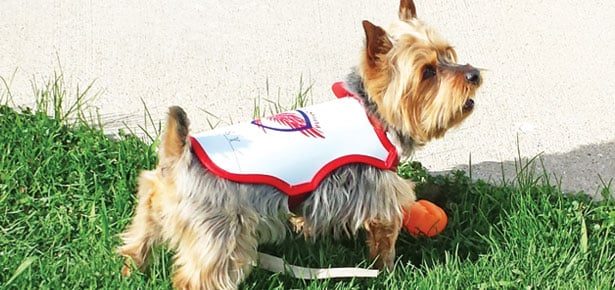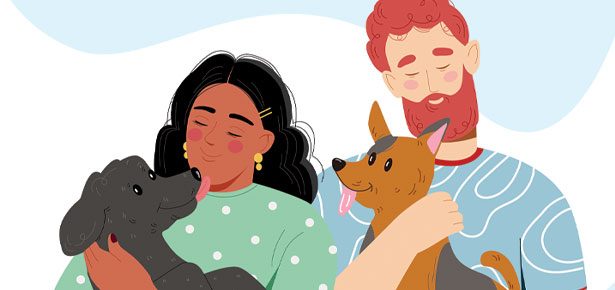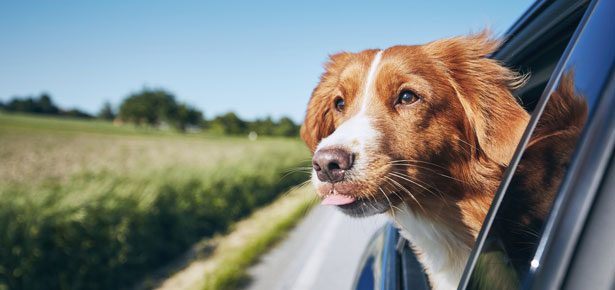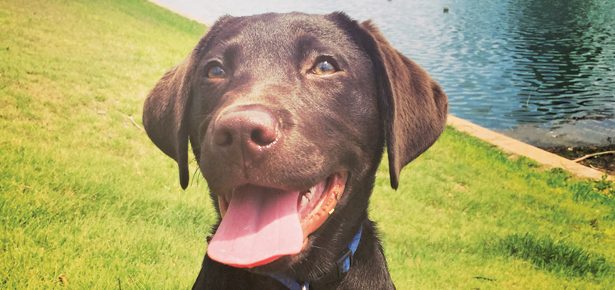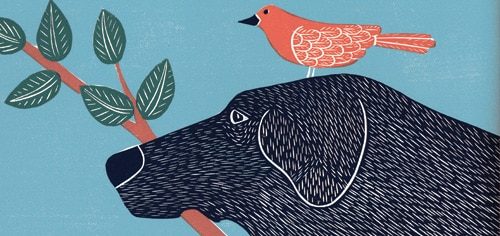
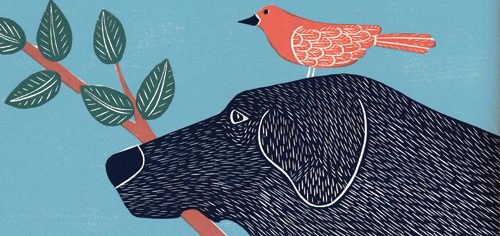
Stephen Huneck
From hand-carved wood to holograms
Nestled into the rugged environs of Northernmost Vermont is a wonderful place where
nature and art, the whimsical and the spiritual, all collide in joyous celebration. Entering
artist Stephen Huneck’s 400-acre Dog Mountain farm is like stepping into another world,
and it is immediately apparent that in this world, dogs are much more than just family
pets—they are the  inspiration and cornerstone of Huneck’s life and work.
inspiration and cornerstone of Huneck’s life and work.
Renowned from Nantucket to Tokyo for his beautiful hand-carved furniture and playful
wooden sculptures, many of which feature dogs as subject or motif, Stephen Huneck is
also widely beloved for his Sally books, a series of children’s stories inspired by the antics
of his inimitable black Labrador Retriever, Sally. Huneck is a master printmaker, interior
designer, stained-glass artist, builder and multimedia artist—and in case that wasn’t
enough, he has plans to delve soon into monumental sculpture and holographic art.
With such breadth and depth to his many creative endeavours, this artistic dynamo is
difficult to categorize, but that’s just the way he likes it. “I don’t use labels,” says Huneck,
“and I don’t think of myself in terms like ‘sculptor’ or ‘writer.’ What I do is I think of something
I would love to have, and I make it.” He is aware that he is often referred to as a folk
artist, but that label doesn’t sit entirely well with him, especially as it is most commonly
understood. “I don’t feel good about it,” he explains, “because I think of it as hokey: people
trying to copy a nineteenth-century mentality. But I do like the concept of ‘folk art’ as
art for everybody, which is what folk art really was. I want my work to be accessible and
affordable. I’m not looking to deal with just the Arnold Schwartzeneggers of the world.
‘Folk art,’ in that sense, is Art for People. I can really respond to that.”
Perhaps Frank Miele, a Manhattan art dealer
who once represented Huneck, put it best when
he said, “Stephen Huneck is not so much a folk
artist as an outstanding American artist whose
works have an indigenous quality. He has literally
carved out a niche of his own. He has
never lost the curiosity and sense of humour of
a young child. That is what gives his work its
enormous freshness and spontaneity.”
Those qualities are in great evidence in Laura
Beach’s new book, The Art of Stephen Huneck
(Harry N. Abrams, 2004), from which Miele’s
comment was obtained. This richly illustrated
biography is itself a masterpiece, offering a truly
fascinating overview of Huneck’s life and work.
The mind-boggling scope of Huneck’s talent is
quickly apparent as one leafs through the volume,
but even with over 200 colour plates, one
only gets a small taste of Huneck’s enormous
artistic output. “It was really difficult to pick
and choose what went into that book,” says
Huneck. “We could easily have filled a dozen of
them.”
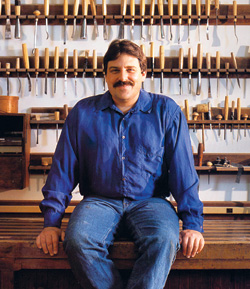
his work exclusively in various parts of the U.S. Huneck
prefers running his own galleries to having his work represented
by others, as he can then make sure that his
staff and the ambience remain true to his values. As he
explains, “There’s an elitism and snobbishness in the art
world that discourages people from participating in art
and enjoying it. To prevent that, I tell my staff right off
that the most important thing is that I want people to feel
welcome and happy, and not under any pressure to buy
anything. I want them to enjoy the gallery as an experience.
It’s great to see everyone—young kids, old people—
all walking around, smiling and happy.” And of course,
dogs are always welcome and are sure to locate a treat or
two at any Huneck gallery.
Dogs are also more than welcome at the Dog Chapel, a
remarkable, traditionally styled New England chapel that
Huneck built on Dog Mountain to celebrate the spiritual bond between dogs and humans. Huneck considers the
chapel to be his greatest and most personal work, and a
look inside reveals why. Every element of the chapel, from
the gorgeous stained-glass windows to the hand-carved
wooden pews, was lovingly created by Huneck and speaks
of the profound connection he feels to the canine soul.
What is most satisfying to Huneck, however, is how much
the chapel has meant to so many who have gone there to
remember a beloved dog who has passed on. To that end,
Huneck has started a “Remembrance Wall” in the chapel,
inviting people to bring or mail in photos of their departed
dogs, along with a written paragraph, if they wish, to be
posted on the wall. “It became so popular,” says Huneck,
“that the Remembrance Wall is now Remembrance Walls.
It’s really a very good and comforting thing.”
Asked if he’s ever received any flak from religious factions
for building a dog chapel, Huneck answers, “When I
was conceptualizing doing it that was a concern, but it’s
been just the opposite. I’ve never gotten any flak and I’ve
had a lot of ministers here. What was funny was when
the chapel was completed, Fox News sent a reporter up
here to do a story on it. They immediately went down to
the local Catholic church and asked the priest all these
leading questions trying to get him to say something negative,
but he just said it’s really a wonderful thing that
adds a lot to the area. I think there’s a fine line and I’ve sort of maintained that. I’m not making fun of anyone or
anything. People understand and appreciate that.”
First conceived in a vision after a near-death experience
in 1994, the chapel, remarkable as it already is, may
soon see some amazing additions. Explains Huneck, “I’ve
been researching holograms. I want to make holograms
of my sculptures for the chapel, like a sculpture of an
angel dog with its wings moving, that will just appear to
you when you’re standing in the right 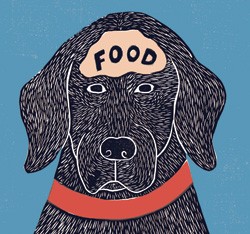
you move on to other places, other images will appear.
It’s doable, I just have to learn more.”
Huneck also has plans to create a monumental 50-foothigh
sculpture of his beloved Sally (whom he lost to old
age in 2002) on top of a mountain on his farm. “It will
be sort of my own Mount Rushmore for Sally.” Like the
holograms, he doesn’t yet know exactly how he’s going
to do it, but for Huneck, diving into the unknown is de
rigueur. “Taking on new art forms is my antidote to boredom,”
says Huneck, who has learned to be absolutely
fearless in the face of the unfamiliar. “You just let your inner self take over and keep it simple. And you realize
that there are times when a lack of knowledge is very liberating.”
Huneck speaks of the freedom children feel to
create art and wishes that more people could retain that
kind of creative openness. “If we could all be five again,
we could make some great art,” he believes. “It’s our rigidity
and fear of failure that prevent us from doing it later.”
Susan Kauffmann lives in Langley, B.C., and writes regularly for Modern Dog.
Her Malamute, Kuma, has requested a pilgrimage to Dog Mountain.
Join the newsletter and never miss out on dog content again!
"*" indicates required fields
By clicking the arrow, you agree to our web Terms of Use and Privacy & Cookie Policy. Easy unsubscribe links are provided in every email.
